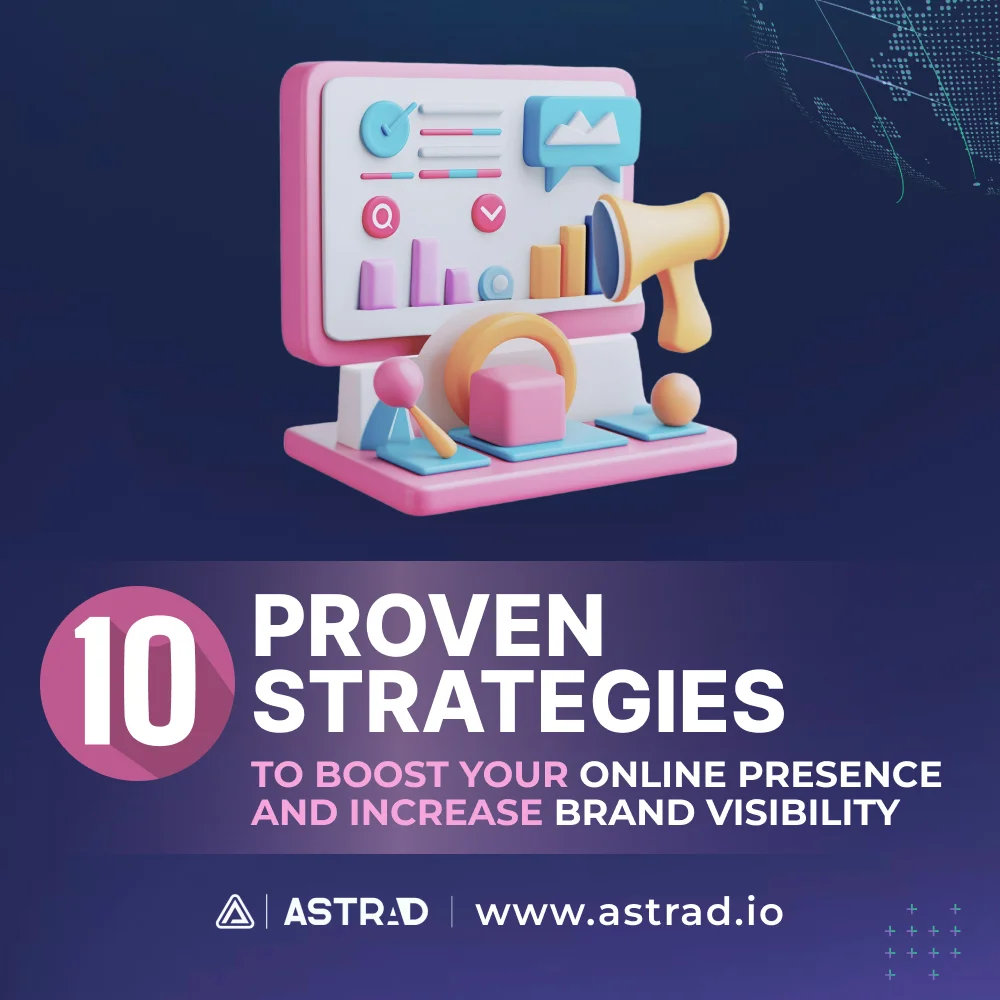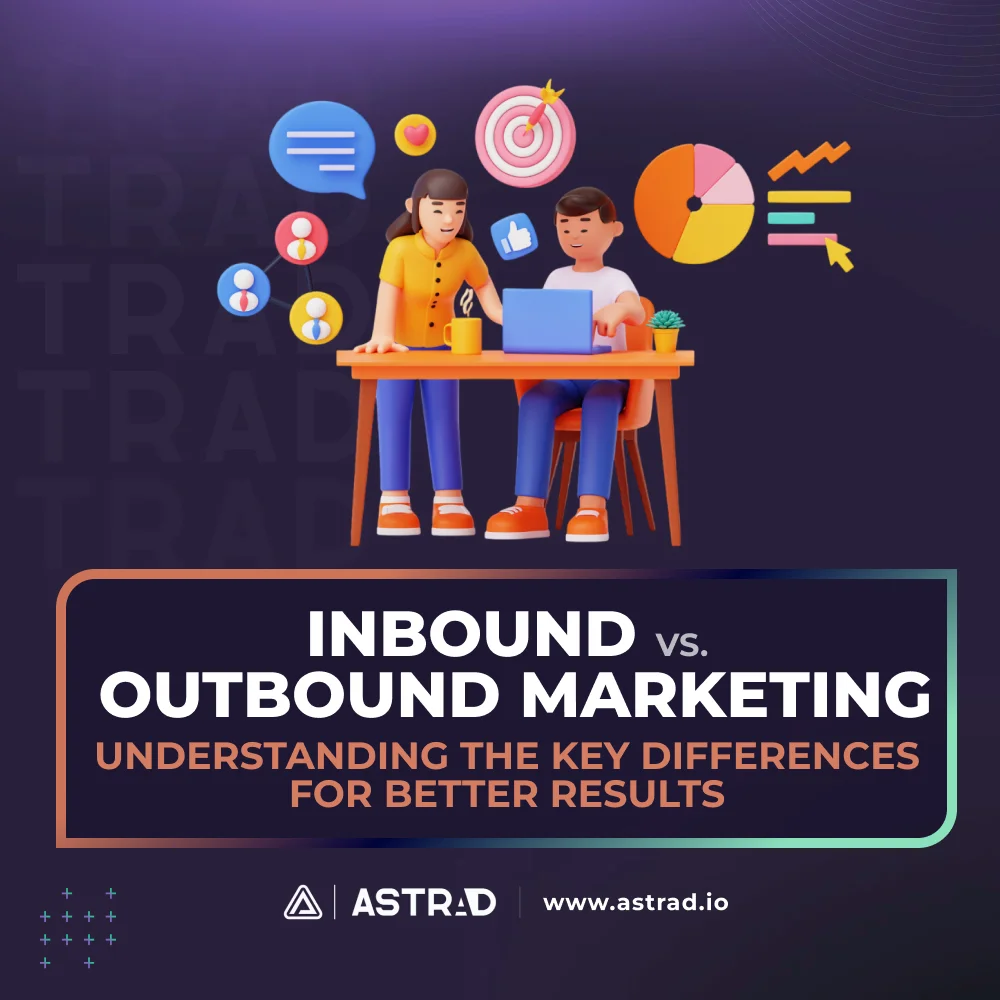Having a strong online presence has become absolutely crucial for business success in today’s digital world. Your online visibility directly impacts how customers discover you, what they think about your brand, and whether they choose you over competitors.
Think about how you research products or services before making a purchase. You probably check websites, read reviews, look at social media, and compare options online. Your customers are doing exactly the same thing. Research shows that 81% of shoppers conduct online research before making a purchase, which means your digital footprint directly impacts customer decisions.
The good news is that building an online presence doesn’t have to be overwhelming or expensive. With the right strategies and consistent effort, any business can significantly improve its visibility and attract more customers. This guide will walk you through 10 proven methods to boost online presence and increase brand visibility, helping you stand out in a crowded marketplace.
Building a Solid Foundation for Your Online Presence
Creating a powerful digital presence starts with getting the basics right. According to the U.S. Small Business Administration’s market research, 73% of small businesses now have websites, yet many still struggle with basic foundational elements that establish credibility and make it easy for customers to find and engage with their business online.
1. Develop a User-Friendly, SEO-Optimized Website
Your website serves as your digital headquarters, and getting it right is essential for everything else you do online. A well-designed site that loads quickly, works perfectly on mobile devices, and provides clear information about your business creates positive first impressions and keeps visitors engaged.
Search engine optimization helps potential customers find you when they search for what you offer. This means using relevant keywords naturally throughout your content, optimizing page titles and descriptions, and making sure your site structure is clean and logical. When search engines can easily understand and index your content, more people will discover your business organically.
Essential elements every business website needs:
- Fast loading speeds (under 3 seconds) to prevent visitors from leaving
- Mobile-responsive design that works perfectly on smartphones and tablets
- Clear navigation menu that helps visitors find information quickly
- Prominent contact information and calls-to-action on every page
- Professional design that reflects your brand and builds credibility
2. Create Consistent, Engaging Content
Content creation plays a vital role in how to build an online presence that attracts and retains customers. Regular blog posts, videos, social media updates, and other content formats help establish your expertise while providing value to your audience.
The key is consistency rather than perfection. Publishing helpful content on a regular schedule builds trust with your audience and keeps your business top-of-mind. Share insights about your industry, answer common customer questions, and provide tips that genuinely help people solve problems.
Quality content also improves your search engine rankings and gives you material to share across social media platforms. When you create valuable content consistently, people start seeing you as a reliable source of information in your field.
3. Establish a Brand Voice and Identity
Developing a consistent brand voice and visual identity across all platforms helps people recognize and remember your business. This includes everything from the tone of your writing to your logo, colors, and the style of images you share.
Your brand voice should reflect your company’s personality and values while resonating with your target audience. Whether you choose to be professional and authoritative or friendly and conversational, maintaining consistency helps build trust and recognition over time.
Visual consistency matters just as much as your written voice. Using the same colors, fonts, and design elements across your website, social media, and marketing materials creates a cohesive brand experience that looks professional and polished.
Leveraging Social Media for Maximum Exposure
Social media platforms offer incredible opportunities to connect with customers and improve online presence through direct engagement and community building.
4. Be Active on the Right Social Platforms
Not all social media platforms work equally well for every business. Instead of trying to be everywhere at once, focus your energy on the platforms where your target customers actually spend their time. Research where your audience hangs out online and concentrate your efforts there.
Different platforms serve different purposes and attract different demographics. LinkedIn works well for B2B companies and professional services, while Instagram might be better for visual businesses like restaurants or retail. Facebook remains popular across age groups and works well for local businesses building community connections.
Here are the key considerations for choosing your social media platforms:
- Demographics of your target audience and which platforms they prefer
- Type of content that works best for your business (visual, professional, conversational)
- Resources available for managing multiple platforms effectively
- Goals for social media (brand awareness, lead generation, customer service)
- Competitor activity and where you see engagement in your industry
5. Engage with Your Audience Regularly
Social media success comes from building genuine relationships, not just broadcasting promotional messages. Regular engagement with your followers through comments, replies, and shares creates a sense of community around your brand.
Respond promptly to comments and messages, ask questions that encourage discussion, and share content from your customers and industry partners. This two-way communication makes your brand feel more human and approachable, which builds stronger connections with your audience.
Engagement also signals to social media algorithms that your content is valuable, which can increase your reach and visibility. The more people interact with your posts, the more likely those platforms are to show your content to additional users.
Smart engagement tactics for how to build an online presence:
- Respond to comments and messages within a few hours during business days
- Ask open-ended questions in your posts to encourage discussion
- Share user-generated content and give credit to your customers
- Join relevant conversations in your industry using hashtags and mentions
- Create interactive content like polls, quizzes, or live Q&A sessions
Boosting Online Presence with Paid Advertising
While organic growth takes time, paid advertising can accelerate your online presence growth and help you reach new audiences more quickly.
6. Utilize Paid Advertising for Targeted Reach
Paid advertising on platforms like Google, Facebook, Instagram, and LinkedIn allows you to reach specific audiences based on demographics, interests, behaviors, and search intent. This targeted approach means your advertising budget gets spent on people who are most likely to be interested in what you offer.
Google Ads can put your business in front of people actively searching for your products or services, while social media ads help you reach potential customers based on their interests and online behavior. Both approaches can significantly increase your visibility and drive traffic to your website.
Start with small budgets and test different ad formats, audiences, and messages to see what works best for your business. Once you identify successful campaigns, you can scale up your investment for greater impact.
7. Retargeting Ads to Maximize Engagement
Retargeting allows you to show ads to people who have already visited your website or engaged with your content online. These warm prospects are more likely to convert because they’ve already shown interest in your business.
Retargeting ads keep your brand visible to potential customers as they browse other websites and social media platforms. This repeated exposure builds familiarity and trust, making people more likely to choose your business when they’re ready to make a purchase.
Create different retargeting campaigns based on how people interacted with your website. Someone who looked at specific products might see ads featuring those items, while someone who visited your about page might see ads highlighting your expertise and credentials.
Effective retargeting campaign strategies:
- Segment audiences based on website behavior and pages visited
- Create specific ad content for different stages of the customer journey
- Set frequency caps to avoid overwhelming potential customers with too many ads
- Use compelling offers or incentives to encourage return visits and conversions
- Test different ad formats and messaging to optimize performance
Strengthening Online Presence with Community and Social Proof
Building trust and credibility online requires leveraging the power of social proof and community connections.
8. Encourage and Leverage Customer Reviews
Customer reviews serve as powerful social proof that influences purchasing decisions. Positive reviews on Google, Yelp, Facebook, and industry-specific platforms help build credibility and improve your search engine visibility.
Actively encourage satisfied customers to leave reviews by making the process simple and convenient. Send follow-up emails after purchases, include review requests in your packaging, or simply ask happy customers in person if they’d be willing to share their experience online.
Respond professionally to all reviews, both positive and negative. This shows potential customers that you care about customer satisfaction and are committed to making things right when issues arise.
Essential strategies for managing your online reputation:
- Send automated review requests after successful transactions or service completion
- Provide direct links to your preferred review platforms to make leaving reviews easy
- Respond to all reviews within 24-48 hours to show you’re actively engaged
- Address negative feedback professionally and offer solutions publicly
- Showcase positive reviews on your website and social media channels
9. Collaborate with Influencers and Partners
Partnering with influencers, industry experts, or complementary businesses can expose your brand to new audiences and build credibility through association. These collaborations work because people trust recommendations from sources they already follow and respect.
Influencer partnerships don’t always require huge budgets or celebrity endorsements. Micro-influencers with smaller but highly engaged audiences often provide better returns on investment for local and niche businesses.
Look for collaboration opportunities with businesses that serve similar audiences but offer complementary services. Cross-promotion benefits both parties and provides value to customers by introducing them to trusted partners.
Effective partnership strategies to improve online presence:
- Partner with micro-influencers in your local area or industry niche
- Create joint content like webinars, podcasts, or co-authored blog posts
- Offer product exchanges or service trades with complementary businesses
- Participate in industry events and conferences to build relationships
- Join business associations and online communities in your field
Tracking and Measuring Online Presence Growth
Understanding what works and what doesn’t is essential for refining your strategy and maximizing your return on investment.
10. Monitor Analytics to Refine Your Strategy
Regular monitoring of website traffic, social media engagement, and other key metrics helps you understand which efforts are driving results and where you should focus your energy. Most platforms offer built-in analytics tools that provide valuable insights into audience behavior and content performance.
Track metrics that align with your business goals, whether that’s website traffic, social media followers, email subscribers, or actual sales. Look for trends over time rather than getting caught up in daily fluctuations, and use this data to make informed decisions about your online strategy.
Set up regular reporting schedules to review your progress and identify opportunities for improvement. Monthly or quarterly reviews allow you to spot patterns and adjust your approach based on what the data tells you.
Key performance metrics to track for online presence growth:
- Website traffic sources and which channels drive the most qualified visitors
- Social media engagement rates and which content types perform best
- Email open and click-through rates to measure audience interest
- Conversion rates from different traffic sources to understand ROI
- Brand mention tracking to monitor online reputation and reach
Taking Your Online Presence to the Next Level
The most successful businesses approach online presence building as an ongoing process rather than a one-time project. Consumer behavior and technology continue to change, which means your digital strategy should adapt and improve over time. Regular evaluation and refinement ensure your efforts remain effective and relevant.
Start by implementing the foundational strategies like optimizing your website and establishing consistent branding, then gradually add more advanced techniques like paid advertising and influencer partnerships. This systematic approach allows you to build momentum while learning what works best for your specific business and audience.
Remember that building an online presence takes time and consistent effort, but the investment pays off through increased visibility, stronger customer relationships, and sustainable business growth. The businesses that commit to these strategies and execute them consistently will see significant improvements in their brand visibility and customer acquisition.






